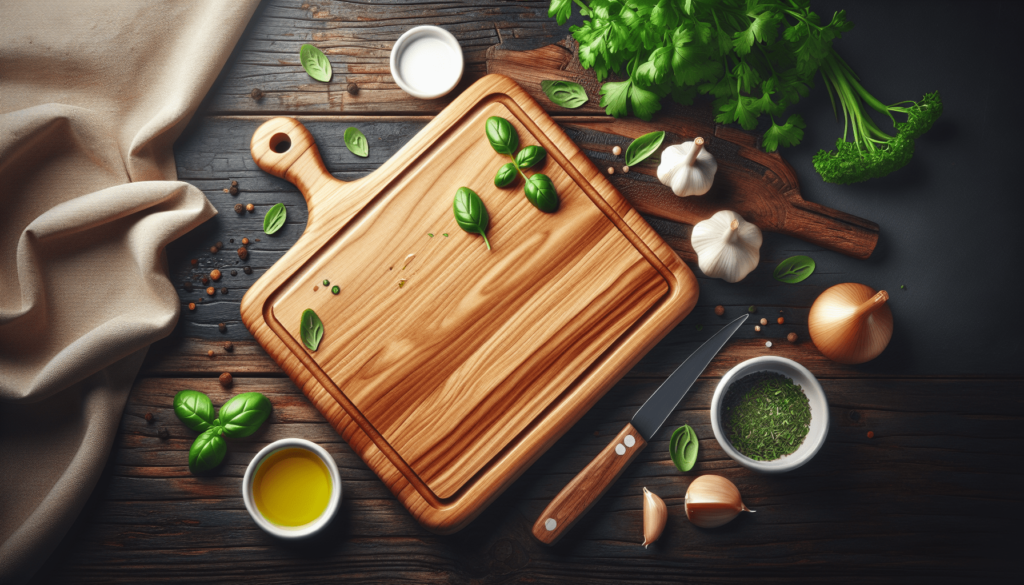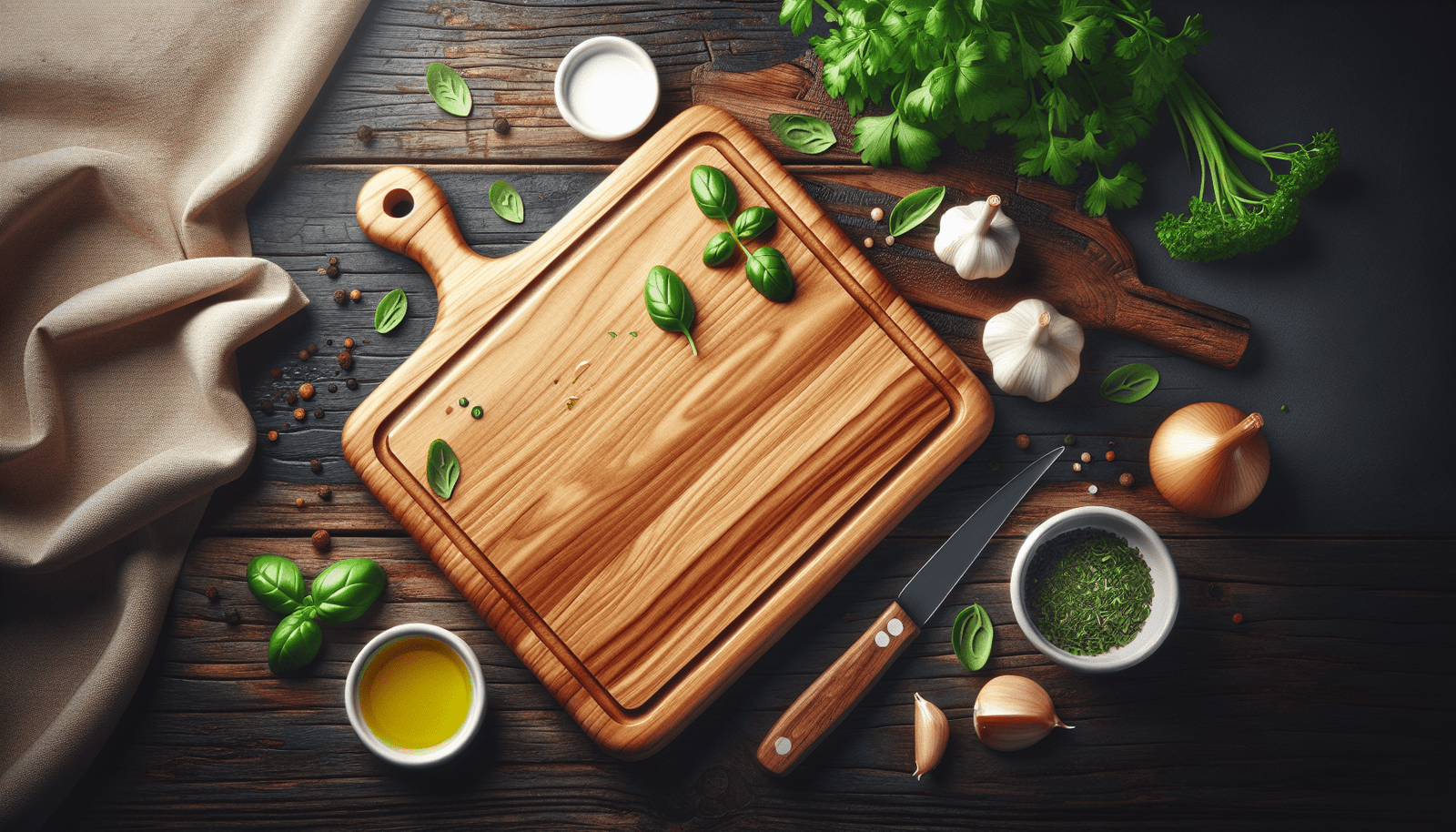How Do I Clean And Maintain A Wooden Cutting Board?
How do I clean and maintain a wooden cutting board? It’s a common question among home cooks who want to ensure their kitchen tools stay in top condition. Wooden cutting boards are not only great for chopping fruits, vegetables, and meats but they also add a natural and rustic touch to your kitchen. However, they require special care to prevent bacteria buildup and keep them looking their best. In this article, we’ll discuss the best practices for cleaning and maintaining your wooden cutting board to prolong its lifespan and ensure food safety.

Cleaning Your Wooden Cutting Board
Cleaning your wooden cutting board is essential to prevent bacteria growth and keep it looking clean. It’s important to properly clean your cutting board after each use to remove any food particles and prevent cross-contamination. Here are the steps to effectively clean your wooden cutting board:
Step 1: Rinse With Warm, Soapy Water
After each use, rinse your wooden cutting board with warm water and mild dish soap. Use a sponge or soft-bristled brush to gently scrub the surface and remove any food residue. Avoid using harsh chemicals or abrasive scouring pads, as they can damage the wood.
Step 2: Sanitize With Vinegar or Bleach Solution
To disinfect your cutting board, you can use a vinegar or bleach solution. Mix equal parts of white vinegar and water, or 1 tablespoon of bleach with 1 gallon of water. Apply the solution to the cutting board and let it sit for a few minutes before rinsing thoroughly with clean water.
Step 3: Dry Thoroughly
After cleaning and sanitizing your wooden cutting board, it’s essential to dry it thoroughly to prevent mold and bacteria growth. Towel dry the board and allow it to air dry in a vertical position to ensure proper air circulation.
Step 4: Season With Mineral Oil
To keep your wooden cutting board moisturized and prevent it from drying out and cracking, apply a thin layer of food-grade mineral oil. Use a clean cloth to rub the mineral oil onto the board’s surface, paying special attention to any dry or cracked areas. Let the board sit for a few hours or overnight to allow the oil to penetrate the wood.
Removing Stains and Odors
Stains and odors can develop on your wooden cutting board over time, especially when cutting strong-smelling foods like garlic, onions, or fish. Here are some tips for removing stains and odors from your cutting board:
Lemon and Salt Scrub
Cut a lemon in half and sprinkle salt on the cut side. Use the lemon as a scrubber to gently rub the salt onto the cutting board’s surface. Let the mixture sit for a few minutes before rinsing with warm water. The citric acid in the lemon helps to disinfect and remove odors, while the salt acts as a gentle abrasive to lift stains.
Baking Soda Paste
Mix baking soda with water to create a paste, then apply it to the stained areas on your cutting board. Scrub the paste into the wood with a sponge or brush, then rinse with warm water. Baking soda is a natural deodorizer and stain remover that can help eliminate odors and discoloration on your cutting board.
White Vinegar Soak
For stubborn stains and odors, you can soak your cutting board in a solution of white vinegar and water. Mix equal parts of white vinegar and water in a large container or sink, then submerge the cutting board and let it soak for a few hours or overnight. After soaking, rinse the cutting board thoroughly with clean water and dry it as usual.
Maintaining Your Wooden Cutting Board
Proper maintenance is crucial to prolong the lifespan of your wooden cutting board and keep it in good condition. Here are some tips for maintaining your cutting board:
Regularly Oil Your Cutting Board
To prevent your cutting board from drying out and cracking, it’s essential to regularly oil it with food-grade mineral oil or cutting board oil. Apply a thin layer of oil to the surface of the board every few weeks or whenever it starts to look dry. This will help keep the wood moisturized and prevent water from seeping into the board.
Avoid Soaking Your Cutting Board
Wood is a porous material that can absorb water, which can cause it to warp and crack over time. Avoid soaking your wooden cutting board in water or leaving it submerged for long periods. Instead, wash it quickly with warm, soapy water and dry it immediately.
Use Separate Cutting Boards for Different Foods
To prevent cross-contamination and potential foodborne illnesses, it’s important to use separate cutting boards for different types of foods. Consider using one cutting board for meats and another for fruits, vegetables, and other foods to prevent the spread of bacteria.
Resurface Your Cutting Board
Over time, your wooden cutting board may develop cuts, scratches, and grooves from regular use. To maintain a smooth and even surface, you can resurface your cutting board by sanding it with fine-grit sandpaper. Sand in the direction of the wood grain until the surface is smooth, then oil the board to restore its natural luster.
Store Your Cutting Board Properly
When not in use, store your wooden cutting board in a cool, dry place away from direct sunlight and heat sources. Avoid leaning it against a wall or storing it flat on a wet countertop, as this can promote bacteria growth and warping. Instead, store your cutting board upright to allow for proper air circulation.
When to Replace Your Wooden Cutting Board
Despite proper care and maintenance, wooden cutting boards have a lifespan and will eventually need to be replaced. Here are some signs that indicate it’s time to replace your cutting board:
Deep Cuts and Grooves
If your cutting board has deep cuts, grooves, or cracks that cannot be sanded out, it’s time to replace it. These areas can harbor bacteria and make it difficult to clean and sanitize the board effectively.
Warping or Bowing
Warping, bowing, or splitting is a sign of water damage and can compromise the structural integrity of your cutting board. If your board is no longer flat and stable, it’s time to invest in a new one.
Mold or Mildew Growth
If you notice mold or mildew growing on your cutting board, it’s a sure sign that it’s time to replace it. Mold can be harmful to your health and is nearly impossible to remove completely from a porous material like wood.
Lingering Odors
Persistent odors on your cutting board that are difficult to remove may indicate that it’s time for a replacement. Over time, wood can absorb odors from foods and develop a rancid smell that cannot be eliminated.
By following these cleaning and maintenance tips, you can keep your wooden cutting board in top condition for years to come. Remember to clean your cutting board after each use, season it regularly with mineral oil, and avoid soaking it in water. With proper care, your wooden cutting board will continue to be a reliable kitchen tool that adds warmth and charm to your cooking space.
